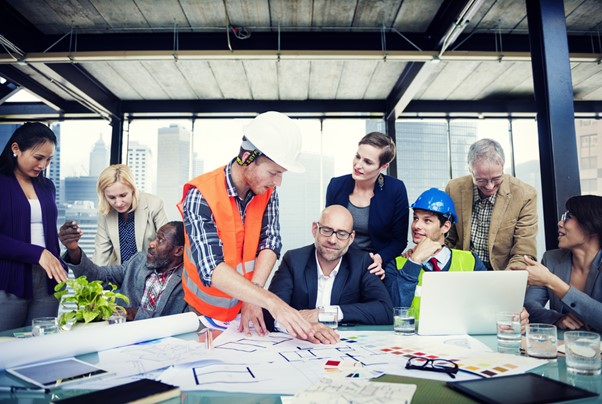
As the starting line of our journey to explore the heart of sustainable building, we ask: who are our champions? What specialist role remains deeply rooted at the centre of the creation of eco-friendly structures? Whose tables are adorned with blueprints that, one day, take on physical form as towering edifices of green engineering? Surely, you’ve got it – the construction designers. Why do they matter, and how do they achieve the unthinkable? Hold tight, as we delve into this immersive topic of sustainable building and the pivot of its existence- construction designers.
Have you ever wondered what our world would be like if everyone took responsibility for their carbon footprint? Or how we could reshape our urban landscapes to be healthier and greener? Sustainability and green building design are no longer just trends but a necessity in our rapidly changing environment. In this battle against environmental degradation, construction designers are our captains. They are the strategists who create visionary ideas, map our course towards greener urbanization, and champion the cause of environmental preservation.
Join me as we embark on an insightful exploration of the critical role of construction designers in sustainable building. This comprehensive sojourn will reveal the why, what, when, and how of sustainable building while unearthing the contributions of construction designers. Brace yourselves for a wealth of knowledge, marked by deep dives into the evolving expectations from these professionals.
Building the Sustainable Dream: The Whys behind Green Structures
What does it mean when we talk about sustainable structures, and why do we continue to insist on their importance? Answering these questions takes us to the root of why construction designers are so important. To build sustainably is not just about the use of recycled materials or solar panels. It’s a holistic approach that encompasses the planning, design, construction, operation, and end-of-life considerations. The core benefits? The significant reduction in the adverse environmental impacts that accompany traditional construction methods.
Construction designers play a pivotal role because their planning affects every aspect of the building’s life cycle, from resource usage to waste produced. These professionals leverage their skills to design efficient buildings that use less energy, reducing the carbon footprint and increasing the overall life span of these structures.
Setting the standard for sustainable construction has also seen an evolution in the professional obligations of construction designers. Beyond their usual scope, they are now tasked with the responsibility of ensuring that the structures they design not only meet aesthetic and functionality milestones but also aim to mitigate climate change.
The Toolbox of Today: How Tech Empowers Construction Designers
With the world relying more than ever on the minds of construction designers, how they approach their work must change. The good news? Technology is here to help. The turn to digital tools like Building Information Modelling (BIM) and 3D printing supports them.
BIM revolutionizes the way structures are designed and built. This technology allows construction designers to create digital replicas of buildings before they’re physically built. BIM enables more effective planning, design, and construction, incrementally reducing waste and ecological impact.
3D printing introduces more sustainable modes of construction, also allowing new architectural approaches that would have been impossible with conventional methods. By using this technology, we can create structures that are not only unique but environmentally responsible.
In adopting these modern tools, construction designers are better equipped to pave the way to a future marked by sustainable buildings, proving technology and sustainability are far from mutually exclusive.
The Flip Side: Challenges in the Path of Sustainable Construction
Yet, the road to sustainable architecture is not without its thorns. One of the significant challenges for construction designers is the initial cost of implementing sustainable practices and technologies. The demand for unique materials and advanced technologies can escalate costs.
Moreover, the lack of knowledge and understanding about sustainable design among clients and builders often leads to an unwillingness to adopt these practices. However, as we continue to bear the brunt of climate change, these hurdles will have to be overcome.
Interestingly, addressing these challenges also opens doors for innovation. Construction designers around the world are leveraging their creativity to drive the adoption of sustainable building practices, even amidst these constraints.
The Pros and Cons: Weighing the Environmental Impact
Finally, there’s the significant matter of environmental cost—a critical factor to consider when examining the role of construction designers in sustainable building.

On the positive side, sustainable buildings use less water, energy, and other resources, thus reducing their carbon footprint. However, the production of new, innovative building materials often involves processes that can be environmentally damaging.
Navigating this tightrope requires that construction designers stay up-to-date with advancements in sustainable materials and methodologies, aligning their design strategies to balance aesthetics, functionality, cost, and environmental considerations.
Conclusion
Sustainable building has evolved from being a choice to a necessity. At the fulcrum of this transformative shift rests the construction designer, crafting the blueprint of a sustainable future.
There’s no doubt that the road to sustainability is a journey full of hurdles, keeping cost factors, waste minimization, material sourcing, and above all, influencing the minds of stakeholders. Nevertheless, as every construction designer would admit, there’s something truly rewarding about turning vision into reality – especially when that reality is shaping a greener and more sustainable environment. into impactful change.
The responsibility, therefore, rests not just with the construction designers but with all of us. As we end this comprehensive dive, it is clear that a constructive collaboration between designers, builders, and clients can truly turn the tide, paving the way for a sustainable global future. Together, we can do more than just dream of a sustainable world. We can build it.





